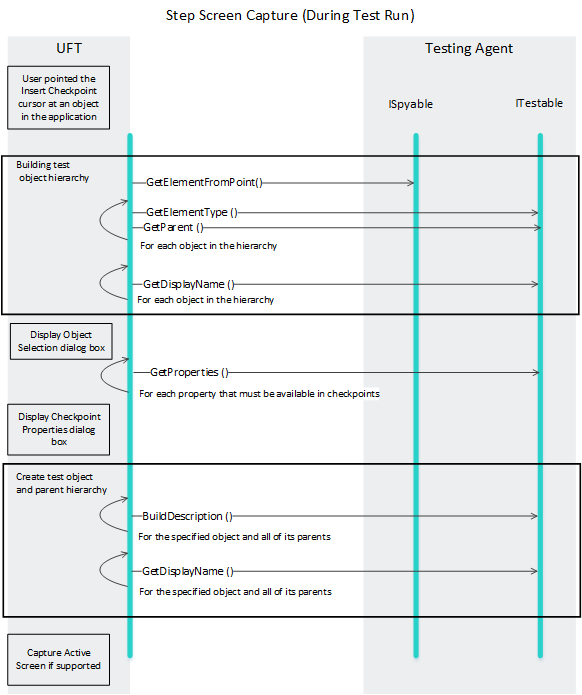Supporting the Creation of Checkpoints During a Record Session
Developing support for creation of checkpoints during a record session is comprised of implementing methods that:
Enable UFT One to identify an object to which the user points in an application
Enable UFT One to retrieve run-time values of identification properties
In Developing Support for the Object Spy or OIC, you implemented the GetElementFromPoint method, required to enable UFT One to refer to an object to which the user points in an application.
In Developing Support for the Test Object Model, you implemented the methods required to enable UFT One to recognize objects and build a test object hierarchy.
In Developing Support for Retrieving Identification Property Run-Time Values, you implemented the methods required to retrieve the run-time values of test object identification properties.
By implementing the methods described in these sections, you provided support for the creation of checkpoints during a record session. You do not have to implement the IRecordable interface to support this capability.
Tip: If you create support for the Active Screen option, an Active Screen capture can be saved with the checkpoint. For more information, see Developing Support for Screen Captures.
The following diagram shows the general sequence of methods that UFT One calls when a user creates a checkpoint during a recording session. This illustrates the purpose of the methods that the Testing Agent must implement. For example, you can see UFT One first calls GetElementFromPoint from the ISpyable interface and then methods from the ITestable interface. UFT One calls GetProperties to retrieve the run-time values of the identification properties that must be checked by the checkpoint (according to the definitions in the testing environment XML). These values are compared with the values retrieved when the test is run.












